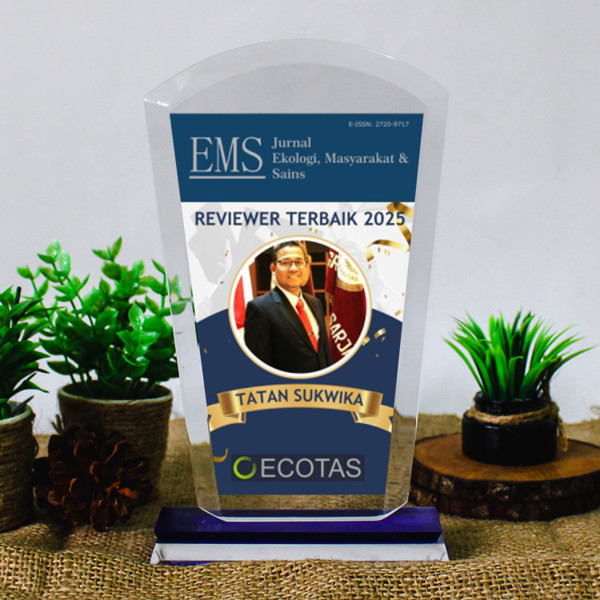Comparative Test on the Activity of Dry Extract of Tamarind Fruit (Tamarindus Indica L) with or without Combination with Liquid Extract of Stevia Leaves (Stevia Rebaudiana B) on Blood Glucose Levels of Male Mice (Mus Musculus) Induced by Alloxan
DOI:
https://doi.org/10.55448/1953kj79Keywords:
diabetes , glucose, stevia, tamarindAbstract
Diabetes mellitus is a disorder that causes hyperglycemia due to insulin deficiency. Tamarind fruit is known to treat diabetes but the sour of tamarind fruit is often covered with sweeteners to improve the taste. This experimental study was conducted to compare the activity of tamarind fruit with and without combination with stevia leaf liquid extract on blood glucose levels in male mice that had been induced by alloxan. After confirming that the mice's glucose levels were >200 mg/dl, 3 groups were tested, namely the test group 1 was given a solution of dry tamarind fruit extract, the test group 2 was given a combination of tamarind fruit extract solution and stevia leaf liquid extract, and the control group was given aqua distillate. The results of the paired t test against the test group 1 resulted in a decrease in blood glucose of 66.37% with p=0.00013 while the test group 2 was 35.35% with p=0.00035, which means there is difference before and after treatment. Meanwhile, to see the difference in the decrease in blood glucose levels between groups, an independent t test was performed and obtained p=0.000002 which means that there is a significant difference in each test group.
References
Abidah Farhani, Siti. 2018. “Pengaruh Pemberian Ekstrak Cair Stevia (Stevia Rebaudiana l.) Terhadap Kadar Glukosa Darah Dan Berat Organ Jantung Pada Tikus Yang Diinduksi Streptozosin (STZ).” Jakarta: Universitas Islam Negeri Syarif Hidayatullah.
Elsner, M., B. Guldbakke, M. Tiedge, R. Munday, and S. Lenzen. 2000. “Relative Importance of Transport and Alkylation for Pancreatic Beta-Cell Toxicity of Streptozotocin.” Diabetologia 43 (12): 1528–33. https://doi.org/10.1007/s001250051564.
Fatimah, Noor Restyana. 2015. “Diabetes Melitus Tipe 2.” J Majority 4 (5): 86–95.
Goyal, S. K., Samsher, and R. K. Goyal. 2010. “Stevia ( Stevia Rebaudiana ) a Bio-Sweetener: A Review.” International Journal of Food Sciences and Nutrition 61 (1): 1–10. https://doi.org/10.3109/09637480903193049.
Hsieh, Ming-Hsiung, Paul Chan, Yuh-Mou Sue, Ju-Chi Liu, Toong Hua Liang, Tsuei-Yuen Huang, Brian Tomlinson, Moses Sing Sum Chow, Pai-Feng Kao, and Yi-Jen Chen. 2003. “Efficacy and Tolerability of Oral Stevioside in Patients with Mild Essential Hypertension: A Two-Year, Randomized, Placebo-Controlled Study.” Clinical Therapeutics 25 (11): 2797–2808. https://doi.org/10.1016/S0149-2918(03)80334-X.
Jain, AlokPal, SantoshSingh Bhadoriya, Aditya Ganeshpurkar, Jitendra Narwaria, and Gopal Rai. 2011. “Tamarindus Indica : Extent of Explored Potential.” Pharmacognosy Reviews 5 (9): 73. https://doi.org/10.4103/0973-7847.79102.
Jeppesen, P.B., S. Gregersen, K.K. Alstrup, and K. Hermansen. 2002. “Stevioside Induces Antihyperglycaemic, Insulinotropic and Glucagonostatic Effects in Vivo: Studies in the Diabetic Goto-Kakizaki (GK) Rats.” Phytomedicine 9 (1): 9–14. https://doi.org/10.1078/0944-7113-00081.
Jeppesen, P.B., S. Gregersen, S.E.D. Rolfsen, M. Jepsen, M. Colombo, A. Agger, J. Xiao, M. Kruhøffer, T. Ørntoft, and K. Hermansen. 2003. “Antihyperglycemic and Blood Pressure-Reducing Effects of Stevioside in the Diabetic Goto-Kakizaki Rat.” Metabolism 52 (3): 372–78. https://doi.org/10.1053/meta.2003.50058.
Jindal, Vaneeta, Dinesh Dhingra, Sunil Sharma, Milind Parle, and Rajinder Kumar Harna. 2011. “Hypolipidemic and Weight Reducing Activity of the Ethanolic Extract of Tamarindus Indica Fruit Pulp in Cafeteria Diet- and Sulpiride-Induced Obese Rats.” Journal of Pharmacology and Pharmacotherapeutics 2 (2): 80–84. https://doi.org/10.4103/0976-500X.81896.
Kuru, Pinar. 2014. “Tamarindus Indica and Its Health Related Effects.” Asian Pacific Journal of Tropical Biomedicine 4 (9): 676–81. https://doi.org/10.12980/APJTB.4.2014APJTB-2014-0173.
Makrufa, Wina Nazula. 2019. “Pemanfaatan Asam Jawa (Tamarindus Indica) Untuk Menurunkan Kadar Glukosa Darah Pada Diabetes Melitus.” Jurnal Ilmu Kedokteran Dan Kesehatan 6 (3): 224–29. https://doi.org/10.33024/jikk.v6i3.2201.
Opinion on Stevia Rebaudiana Bertoni Plants and Leaves. 1999. Brussels: DIRECTORATE-GENERAL XXIV CONSUMER POLICY AND CONSUMER HEALTH PROTECTION.
Puspitasari, Ermay Hayu. 2014. “Uji Efek Ekstrak Etanol 70% Daging Buah Asam Jawa (Tamarindus Indica L) Terhadap Penurunan Kadar Glukosa Darah Tikus Jantan Galur Wistar (Rattus Norvegicus) Yang DIinduksi Aloksan.” Surakarta: Universitas Muhammadiyah Surakarta.
Widowati, Wahyu. 2008. “Potensi Antioksidan Sebagai Antidiabets.” Maranatha Journal of Medicine and Health 7 (2): 193–202.
Downloads
Published
Issue
Section
License
Copyright (c) 2025 Jurnal Ekologi, Masyarakat dan Sains

This work is licensed under a Creative Commons Attribution-NonCommercial 4.0 International License.
Authors of articles published in Jurnal EMS are permitted to self-archive the published/PDF version anywhere.






























